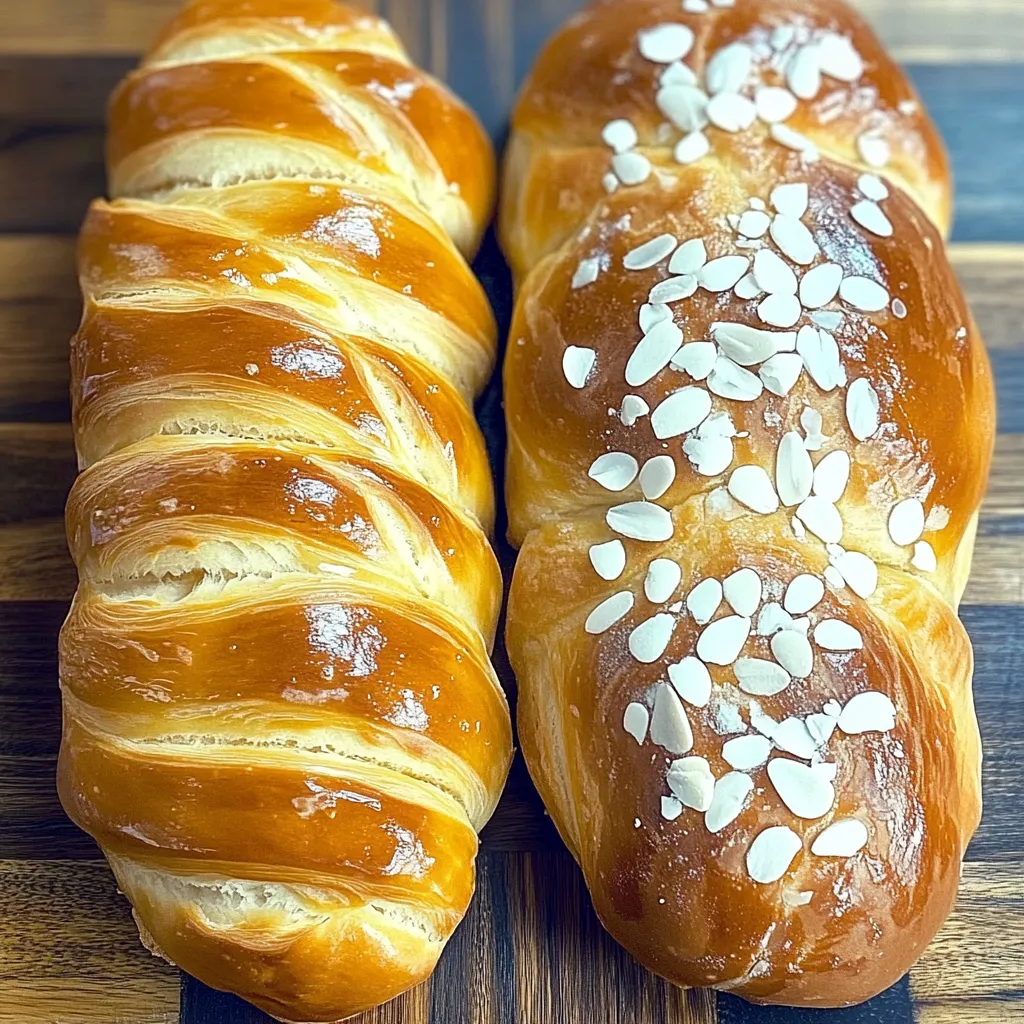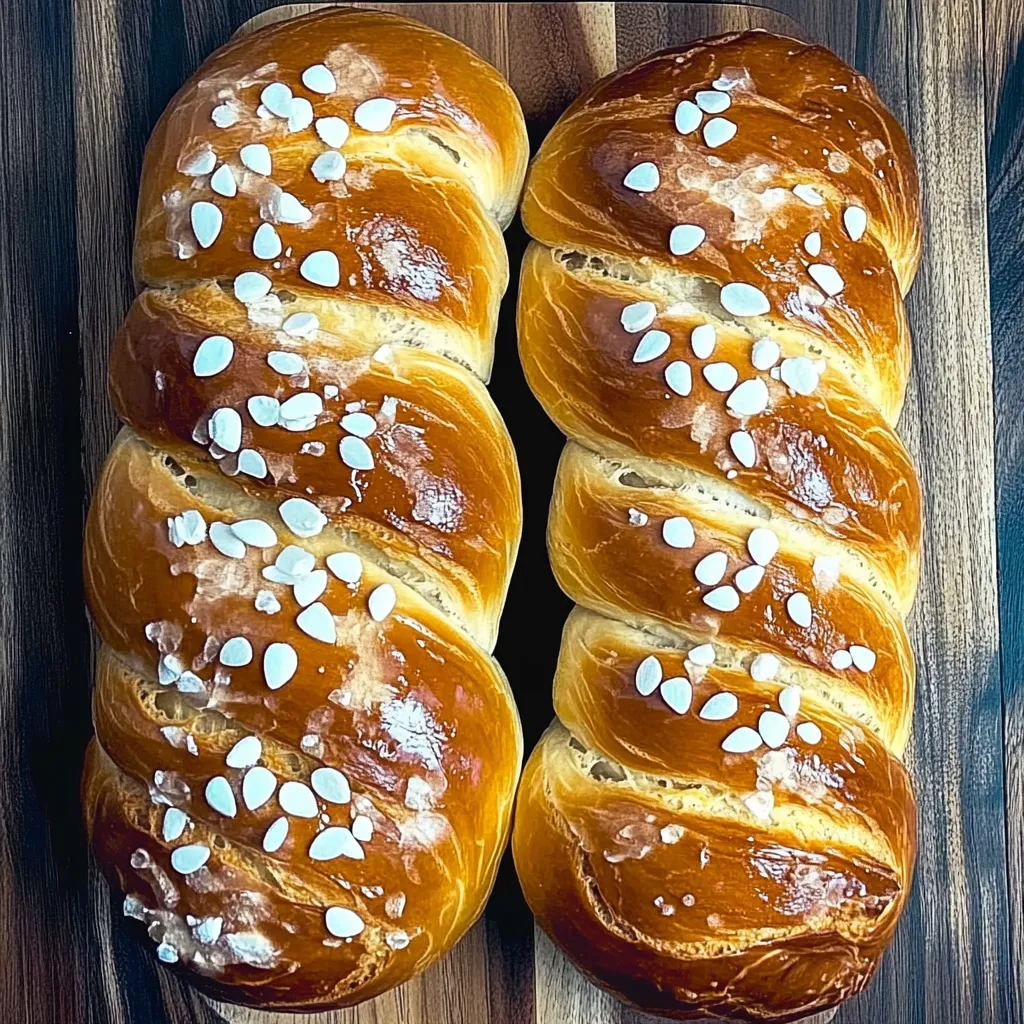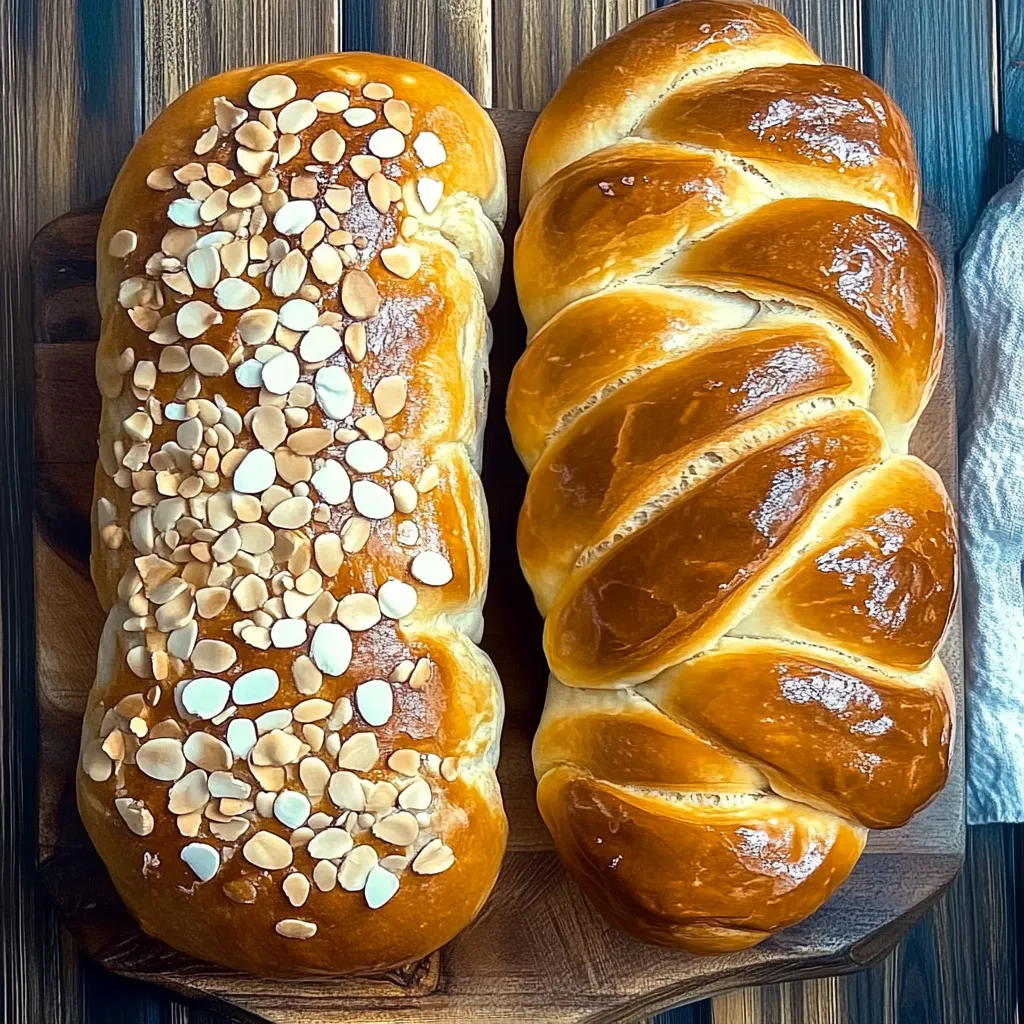 Pin it
Pin it
This classic Tsoureki captures the heart of Greek Easter feasts with its fluffy, cloud-like consistency and fragrant spice blend. This sweet bread has been woven into my family's Easter customs for countless years, spreading wonderful scents throughout our house that mark the beginning of springtime festivities.
I picked up how to make Tsoureki standing beside my grandma, whose fingers shaped the dough with natural skill. To this day, the process of twisting these sweet breads brings back snapshots of those precious early hours in her kitchen, where flour covered everything.
Ingredients
- High protein bread flour: Builds the ideal foundation and pillowy softness
- Mahlepi spice: Offers its signature cherry-almond scent that's key to real Tsoureki
- Mastica resin: Contributes a light pine touch that's unique to Greek baking
- Orange zest: Lifts the hearty dough with fresh citrus hints
- Cardamom: Boosts the flavor profile with cozy spicy elements
- Sesame seeds or sliced almonds: Add classic garnish and nice crunch
Step-by-Step Instructions
- Proofing the Yeast:
- Mix flour, sugar, and yeast with lukewarm water in a container and stir well. Let it rest until bubbles form and it looks active. This starter step matters a lot for getting your bread to rise properly and turn out airy and light.
- Creating the Aromatic Base:
- Combine all your dry stuff including flour, sugar, ground spices, salt, and orange zest in a big bowl. These fragrant components form the heart of Tsoureki, with mahlepi and mastica creating that special Greek Easter bread smell that takes over your kitchen.
- Forming the Enriched Dough:
- Add milk, eggs, melted butter, vanilla, and the bubbly yeast mixture to your dry stuff. Work it all together till everything's mixed in. The rich dough should feel gentle and a bit tacky when you touch it, showing you've got just the right amount of moisture.
- Kneading to Perfection:
- Move dough to a clean counter and knead hard for at least 10 minutes till it's smooth and stretchy. This long kneading builds up the gluten framework that gives Tsoureki its special texture. The dough should feel sticky but not cling too much to your hands.
- First Rise:
- Put the dough in a greased bowl, wrap with plastic, and set in a warm place till it puffs up double. This unhurried process lets flavors grow and helps the yeast make tiny air pockets all through the bread.
- Shaping and Braiding:
- Split the risen dough into 18 same-sized chunks and roll each into 40cm strips. Taking three pieces at once, braid them together to shape a typical Tsoureki loaf. The braiding isn't just pretty—it also helps everything bake evenly.
- Second Rise:
- Set braided loaves on paper-lined baking sheets, making sure they have space to grow. Cover and wait till they're visibly fluffier but not fully doubled. This extra rise creates just the right final consistency.
- Finishing and Baking:
- Paint loaves with egg wash for shine, scatter sesame seeds or almonds on top, and bake at 170°C till they turn golden. The smell filling your kitchen during this last step makes all your patient work worthwhile.
 Pin it
Pin it
The sweet-smelling mahlepi comes from crushed cherry stones and really makes this bread stand out. When I first got hold of genuine mahlepi at a local Greek shop, I saw right away how it changed my Tsoureki. That faint almond-cherry scent took my Greek family members straight back to their Easter mornings as kids after just one taste.
Finding the Specialty Ingredients
You can get mahlepi and mastica at Greek or Middle Eastern stores, fancy spice places, or websites. It's worth going out of your way for these items since they give you that real flavor that makes Tsoureki so special. If you just can't get mahlepi anywhere, some ground anise mixed with fennel seeds can give you something kinda similar in terms of smell, though it won't taste exactly the same.
Serving Traditions
Greek families usually enjoy Tsoureki on Easter Sunday after the Lent fasting ends. The bread often comes with hard-boiled eggs colored red to stand for Christ's blood. When you're ready to eat it, try having it with Greek coffee in the morning or a glass of sweet Mavrodaphne wine later in the day. The bread also tastes amazing with toppings like honey, jam, or traditional Greek preserved fruits.
Storage Solutions
Tsoureki stays fresh way better than other homemade breads. To keep your loaves tasting great, let them cool all the way before wrapping them tightly in plastic. Keep them on your counter for up to 5 days. If you want to save them longer, wrap the loaves well and freeze them for up to 3 months. If your Tsoureki gets a bit stale, you can bring it back to life by warming it gently in a 150°C oven for 5-10 minutes.
 Pin it
Pin it
When you make Tsoureki, you're bringing a bit of Greek Easter magic into your home, creating both lasting memories and tasty treats with each twisted loaf.
Frequently Asked Questions
- → What do mahlepi and mastica do in this bread?
Mahlepi (or mahlab) is a spice made from ground cherry seeds, giving the bread a warm, almond-like taste. Mastica is a resin originating from Chios Island, offering a delicate pine-like aroma. These unique ingredients are what give Tsoureki its one-of-a-kind flavor that sets it apart from other sweet loaves.
- → Can I prepare it in advance?
Absolutely! Bake Tsoureki 1-2 days ahead, wrapping it tightly after it cools to keep it soft. It also freezes well for up to three months—just defrost and warm it before serving to regain that fresh-baked feel.
- → Why is it important to let the dough rise twice?
Giving the dough two rising periods helps get that soft, light texture. The first rise builds the dough's flavor and structure. The second happens after braiding, allowing the loaf to puff up and give you that soft, tender crumb everyone loves. Don’t skip these steps!
- → What if I can't find mahlepi or mastica?
If you can't locate these ingredients, try using a mix of fennel and anise powder as a substitute for mahlepi. Replace mastica with vanilla and a dash of bay leaf powder. While the flavor won't exactly mimic traditional Tsoureki, these swaps will keep your loaf aromatic and flavorful. You can also lean into orange zest or cardamom for extra depth.
- → How can I tell if I've kneaded my dough enough?
A properly kneaded dough will feel elastic and slightly sticky without being messy. If you stretch it, the dough should hold together without breaking (this is called the windowpane test). Press a finger into it—if the dough bounces back slowly, you're ready to move on.
- → What's the best way to store leftovers?
Let the loaf cool completely, then wrap it tightly in plastic or place it in an airtight container. It stays fresh for 3-4 days at room temperature. Avoid refrigeration since it dries out the bread faster. For longer storage, slice and freeze the bread, then toast slices lightly to bring back its texture and taste.
